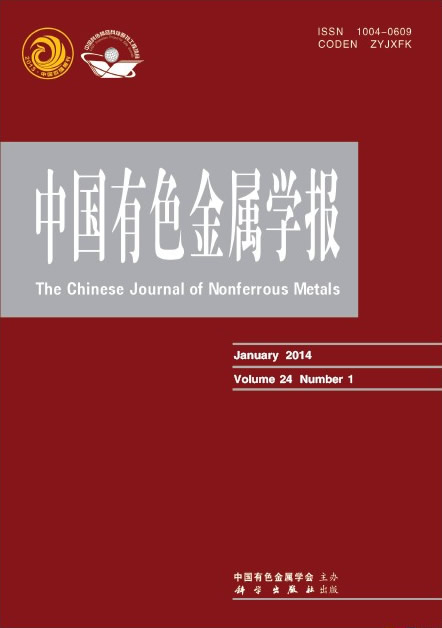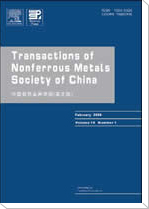(1. 哈尔滨工业大学 材料科学与工程学院,哈尔滨 150001;
2. 山西航天机电设备研究所,晋中 030800;
3. 哈尔滨工业大学 化工学院,哈尔滨 150001)
摘 要: 采用钨电极熔化、离心浇注工艺制备4种Ti-Cr合金,研究Ti-Cr合金的显微组织和力学性能,并采用CJS111A型球−盘式摩擦磨损试验机评价其干摩擦磨损性能,研究合金元素Cr对Ti-Cr合金耐磨性的影响,利用扫描电子显微镜(SEM)观察Ti-Cr合金的磨损表面,采用力学性能显微探针观察测试Ti-Cr合金的磨痕轮廓和最大磨痕深度,分析Ti-Cr合金的磨损机理。结果表明: Cr含量对Ti-Cr合金的显微组织形貌影响较大,Ti-Cr合金维氏硬度随着Cr含量的增加而降低;Ti-10Cr合金的最大压缩强度为2 024 MPa,Ti-15Cr合金的最小压缩强度为1 650 MPa;4种Ti-Cr合金中,Ti-5Cr合金的稳态摩擦因数最小,磨损表面较光滑,Ti-15Cr和Ti-20Cr合金的磨损表面出现了犁沟,磨屑粘连在一起。随着Cr含量的增加,Ti-Cr合金的最大磨痕深度减小,抗磨性增强,Ti-Cr合金的磨损机制:以磨粒磨损为主,是黏着磨损和磨粒磨损共同作用。
关键字: Ti-Cr合金;显微组织;力学性能;干摩擦;耐磨性
(1. School of Materials Science and Engineering, Harbin Institute of Technology, Harbin 150001, China;
2. Institute of Shanxi Astronautic Electromechanical Device, Jinzhong 030800, China;
3. School of Chemical Engineering & Technology, Harbin Institute of Technology, Harbin 150001, China)
Abstract:Ti-Cr alloys were fabricated by using tungsten electrode melting and centrifugal casting. Microstructure and mechanical properties of Ti-Cr alloys were investigated. The dry wear resistance of Ti-Cr alloys against Gr15 ball was investigated on CJS111A ball-disk wear instrument. The influence of alloy element Cr on alloys wear resistance was investigated. Worn surface morphologies were observed by scanning electron microscope (SEM). The maximum wear scar depth of Ti-Cr alloys was measured by electron microprobe analyzer. The wear mechanism of Ti-Cr alloys was analyzed. The results show that crystal structure and morphology of the cast Ti-Cr alloys are sensitive to their chromium contents. The Vickers hardness of the Ti-Cr alloy decreases with the increase of the chromium concentration. The highest compression strength of Ti-10Cr alloy is 2 024 MPa and the lowest compression strength of Ti-15Cr alloy is 1 650 MPa. Ti-5Cr alloy shows a smallest steady friction coefficient and the worn surface is comparatively smooth. For Ti-15Cr and Ti-20Cr alloys, the phenomenon of furrow cut happens and furrows form during wear tests. Wear tests show that the increasing Cr content leads to a reduction of wear depth of Ti-Cr alloys and increase of wear resistance. The wear mechanism for Ti-Cr alloys is a combination of adherence wearing and debris wearing.
Key words: Ti-Cr alloys; microstructure; mechanical properties; dry friction; wear resistance


